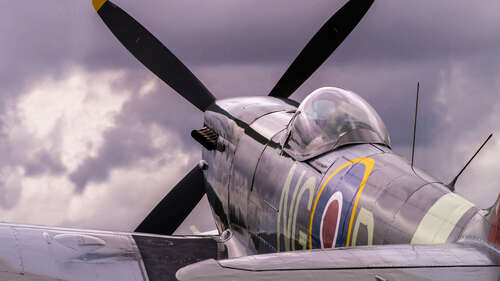
Early in the 1930s, Air Ministry Specification F7/30 was issued. It was an ambitious call for the industry to manufacture a fighter that was equal parts heavily-armed and quick. Specifically, the benchmarks to hit were 250 miles per hour with a full complement of four guns.
Vickers Supermarine’s initial submission was not successful, but through a series of prototypes and improvements (one being the implementation of Rolls-Royce’s PV-XII V12 engine), the soon-to-be Supermarine Spitfire took shape and to the skies. A prototype, dubbed K5054, went up in the air in March 1936, and further developments only enhanced its potential. Rather more than was sought, a top speed of 250 mph and four guns, the Spitfire that would enter service could reach 348 mph and was equipped with twice that number of Browning guns.
It was a potent aircraft and a powerful weapon to wield. As such, it outshone other aircraft in the arsenals of the world during the conflict, including its British-built fellow, the Hawker Hurricane. As historian Paul Beaver put it to the BBC, the aircraft “had a certain mystique about it,” and opposing forces would claim they’d been defeated by a Spitfire rather than admit it was a Hurricane. The unique, innovative, and characteristic design went a long way to securing the Spitfire’s place in aviation history.

